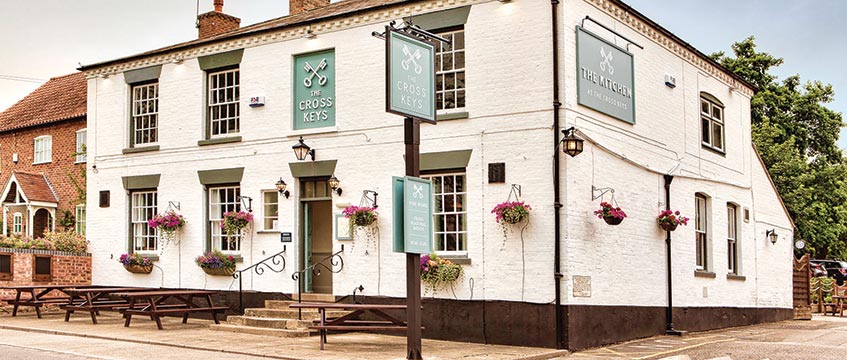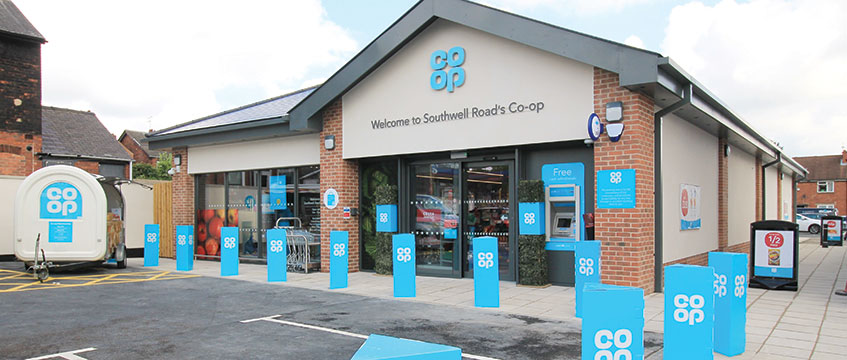Continuing turmoil on the UK’s high streets has hit landlords hard. Real estate investment trusts, in particular, have taken a knock from the growing lack of confidence in the retail sector. Share prices at the likes of Hammerson and Intu, for example, have dropped by 15% and 34%, respectively, over the past year.
To shore up their defences, some landlords are actively reducing their exposure to retail by beefing up their operations in different sectors. Among these players is NewRiver REIT, which last year bought Hawthorn Leisure’s 298 community pubs in England, Scotland and Wales from Avenue Capital for £106.8m.
The deal bulked up the size of the REIT’s pub estate to 629 pubs, after two previous transactions in which it acquired 202 pubs from Marston’s in November 2013 and another 158 pubs from Punch Taverns in 2015.
And now the REIT – which counts community shopping centres and retail parks as its other two core sectors – is aiming to raise the proportion of its pubs business on its overall balance sheet to 30% “in due course”, from just under 20% of its £1.4bn portfolio at present.
Mark Davies, chief financial officer at NewRiver, says that a good scale of the business would be “up to 1,500-2,000 pubs, as a medium-term objective”.
“We went from zero to nearly 630 pubs in five years, so 2,000 over the next five years is quite possible. But integrating the two portfolios in our business is the priority – right now, we are in no hurry,” he says, as he takes EG on a pseudo pub-crawl across some of its newly acquired community pubs in the Midlands.
Higher returns
To put the returns the REIT can expect from its pub business in perspective, Davies says it targets a 7-8% yield for its shopping centres, of which it had 33 at its year-end in March, located in small and medium-sized towns. Its community pubs division, on the other hand, promises higher returns from a starting point of around 14%.
Coupled with capital returns from building convenience stores on surplus land, total returns from its pub sites could prospectively tally up to 20%.
“Our shopping centres are yielding around 7.2% at the moment; we have to look hard to get income growth out of that,” says Davies.
“We are able to get roughly 1-1.5% net income growth from our centres, giving us above 8% return on them. We are getting slightly better growth rates on our retail parks, if off lower rents – the average rent [at those] is around £10 per sq ft.
“In pubs, though, our starting point is much higher. Our budget for the portfolio over the next 12 months is 1.5-2%; so even at 15% it’s an income return.”
In the year to 31 December 2017, Hawthorn Leisure generated an adjusted EBITDA of £9.9m and had total assets of £153m. The transaction is expected to increase funds from operations in the year to March 2019 by £7.7m. On a proforma basis, NewRiver’s consolidated LTV is expected to rise from 28% as at 31 March 2018 to 34%.
Davies adds: “Our banks have understood and given us the money to invest. Just because it’s high yielding doesn’t mean it is higher risk.”
Integration, which is well under way, is expected to complete in early 2019. From there, Davies says, the REIT will be in a “good place to deploy more capital”.
“These assets are sustainable because they are community assets,” he says. “[Some of these] aren’t beautiful buildings, but you can’t fail to make money with them.
“Communities are paying decent rent on these pubs and buying beer from us, and we will make them far better pubs by reinvesting some of those profits.”
Last year the REIT spent £1.4m on refurbishing its pubs; this year, it has set aside £3.6m for the same purpose, from which it expects to get a return of 25-30%.
Development opportunities
As our car passes two converted pub sites – one of which has become a nursery, the other an Indian restaurant – the scope for change-of-use for unprofitable pubs is evident.
However, the REIT prefers to develop assets in surplus land surrounding or above their newly acquired pubs to generate more value from the sites. This involves turning unused space from fields alongside the assets, extra car-parking spaces or beer gardens into convenience stores and homes.
“When we did the Marston’s deal in 2013, we approached it as a property acquisition, as opposed to a pub acquisition. At that time, we identified lots of change-of-use opportunities,” says Davies.
“But rolling forward five years or so, there aren’t lots of opportunities for change-of-use and creating new assets – we can’t justify it when the pub is a profitable asset generating a lot of cash. The ability to change the use to a restaurant, drive-through, coffee shop or convenience store is more limited.”
NewRiver has so far obtained consent for 115 residential units across its pubs portfolio, with consent received for another 50 this year.
One of the Marston’s pubs we visit has gained planning consent for two housing properties to the side of the car park. Around 20% of the capital generated from both plots will be reinvested into the pub’s external décor.
Of the 298 pubs it has newly acquired, the landlord has so far identified up to 40 sites with surplus land that could be used to generate extra revenue from new homes and from convenience stores (seen as one of the most resilient sectors in retail so far this year).
As part of NewRiver’s store development programme for the Co-operative, it plans to provide 40 Co-op units across its pub sites, each sized under 3,700 sq ft to meet specifications for longer trading hours. So far, it is on site with three developments to deliver a total of 23 shops. The supermarket also stipulates a minimum of six car-parking spaces.
Each one trades on 15-year leases with no breaks; commercial terms of the deals usually remain the same, at up to £17.50 per sq ft.
“Typically it costs around £550,000-£560,000 to build a new Co-op store, while the land cost is zero; the yield is worth around 5%, so you make a great return on that,” says Davies.
With the continuing squeeze on consumer finances, it could be argued that the temptation to buy cheaper alcohol off the shelf at the nearby Co-op could dent pub sales.
Davies acknowledges this can occasionally happen; however, any impact is offset by the amount of footfall drawn in by visitors crossing over from their regular shop for household essentials.
He notes: “These assets complement each other in terms of demographics. There will probably be one-off incidents, but it’s all relative. It’s about capturing footfall from people coming to the Co-op for day-to-day necessities.”
Beyond its existing pub sites, the company is also looking at the potential to put pubs or bars into some of its shopping centres, focusing on centres with longer trading hours. David Shipton, managing director of the REIT’s pub division, says it is “a work in progress”.
The drink-led pub comeback
While not as turbulent as the retail sector, pub businesses have seen their fair share of challenges this year. Rising wages are squeezing profit margins, while the carbon dioxide shortage in the summer sparked concerns over long-term supply.
Shipton says: “Often the downsides [of trading in the pub industry] are offset by our diversification – we have so many assets. It tends to be issues such as the CO2 shortage – random one-off events that do have an impact, but we have the budget to counter it.”
And although the decline in the number of wet-led UK pubs in recent years has been well documented, the sector otherwise appears to be showing signs of a revival, against the increasingly saturated food-led market.
Andy Fyffe, associate partner and leisure specialist in EY’s transaction advisory services team, observes: “Tenanted pubs were not seen as an attractive asset for a long time. There were a lot of issues in and around the smoking ban, and a big swing of investor interest into food and food-led pubs, and high street bars, but the industry has now stabilised.
“The number of pubs is lower than it used to be, and those that are left generally have good-quality tenants. There is a renewed vigour in the sector – there will be more investors coming in. Tenanted pubs are looking at a brighter future.”
Heightened investment
Meanwhile, the bumper summer for pubs after the prolonged hot weather and the World Cup is expected to further pique appetite for M&A in the sector. More assets are also expected to hit the market, as brewers continue to slim down their pub estates.
Fyffe says: “From the tenanted side of things, there is definitely real estate money out there looking at pubs as an asset class.
“There are three or four active players in the investment space, so I think there will be more deals to come. Then other players in the sector are looking to reshape their portfolios, so naturally some pub portfolios will come to market.”
NewRiver will undoubtedly be among the players keeping a close eye on these potential opportunities as they unfold. “We might put more money into this asset class – not immediately, but after integration we will see,” says Davies.
“There will be more on the market and more opportunities coming our way, so watch this space.”
NewRiver’s pubs business
- Total estate: 629 pubs
- Proportion of NRR’s £1.4bn portfolio: 19%
- Targeted total returns from pubs: 20%
- Reinvestment in pubs this year: £3.6m
- Hawthorn site count: 298
- Hawthorn deal size: £106.8m
- Hawthorn sites with surplus land: 40
To send feedback, e-mail pui-guan.man@egi.co.uk or tweet @PuiGuanM or @estatesgazette












